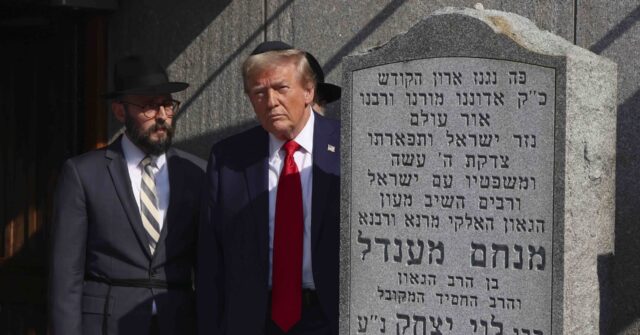On October 7, 2024, former President Donald Trump made a significant visit to the Ohel in Queens, New York, to honor the anniversary of the terror attacks that occurred on the same date in 2023. The site is renowned as the burial place of Rabbi Menachem Mendel Schneerson, revered as the Lubavitcher Rebbe, alongside his predecessor, Rabbi Yosef Yitzchak Schneersohn, also known as the “Previous Rebbe.” The Rebbe stands as one of the most influential Jewish leaders of the 20th century, having played a pivotal role in the revival of Judaism during the post-Holocaust era. His legacy continues to attract global attention, with leaders from various nations frequently seeking his guidance during his lifetime and posthumously.
Rabbi Schneerson, who emigrated from Europe shortly before World War II, became a central figure in Jewish life in America after his leadership of the Lubavitch Chabad movement began following his father-in-law’s passing. His contributions to Jewish thought and community rebuilding have left an indelible mark. The Ohel remains a site of pilgrimage, drawing visitors who seek spiritual reflection and connection to his teachings. World leaders, including the recently elected Argentinian President Javier Milei, have recognized the significance of this site, showcasing its relevance beyond local or national borders.
Traditionally, individuals visiting the Ohel engage in prayer and leave written notes, often expressing personal requests or gratitude to the Rebbe, which are placed at the gravesite. This custom is believed to bring blessings and good fortune to the visitors, fostering a sense of communal and spiritual upliftment. Notably, members of the Trump family, including Ivanka Trump and Jared Kushner, have honored this tradition by visiting the Ohel prior to significant events, reflecting the site’s enduring influence among contemporary political figures.
On the day of his visit, Trump dedicated substantial time to commemorate the tragic events of the October 7 attacks, which saw the loss of approximately 1,200 lives in Israel, including American citizens. The attacks, executed by Hamas militants, resulted in a significant hostage crisis, with nearly 100 individuals, including four Americans, believed to be held captive in Gaza. Trump’s visit served as a somber reminder of the ongoing challenges faced by Israel and the Jewish community worldwide while reinforcing his connections to Jewish leaders and institutions.
The significance of Trump’s visit extends beyond its immediate context; it illustrates the broader relationship between political leaders and the Jewish community, particularly in times of crisis. As Trump offers his condolences and prayers at the Ohel, he also underscores the commitment of various political figures to support Israel and advocate for peace and security in the region. The Ohel remains a vital symbol, representing resilience, memory, and hope in the face of adversity.
As global events continue to unfold, the relevance of the Ohel as a site of reflection and solace for leaders like Donald Trump and others is likely to persist. The act of visiting the graves of influential figures serves as a grounding experience for political leaders, emphasizing the need for unity and support amidst turmoil. This juxtaposition of personal reflection within a historical and ongoing narrative of struggle reinforces the idea that faith and politics often intertwine in seeking answers and providing strength during challenging times.

